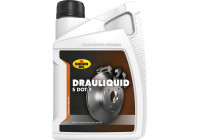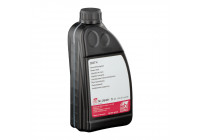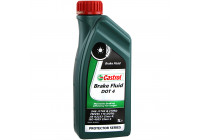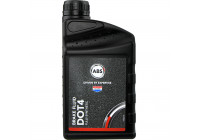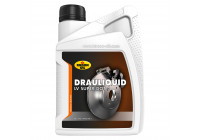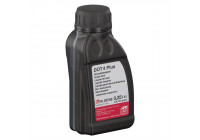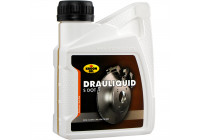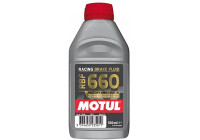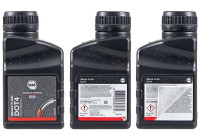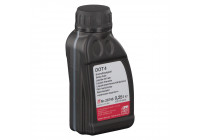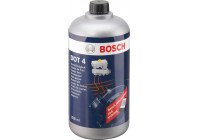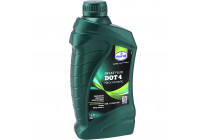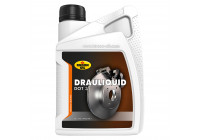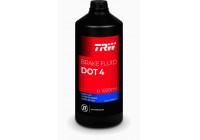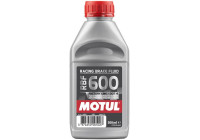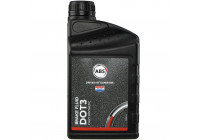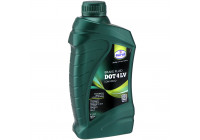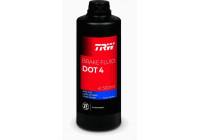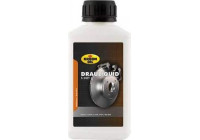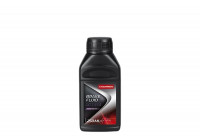Brake fluid
Brake fluid is important for driving safety. It ensures that the power of the
brake pedal transfers to the wheel.
Without brake fluid, your car will not be able to brake properly. It is, therefore, a very important part of the braking system. It ensures you, that your
brakes and eventually can come to a stop. In addition, the liquid also has the
purpose of preventing rust and lubricating the moving parts.
Because brake fluid attracts water, an amount of
water will show up in the liquid over time. Water will negatively influence the
heat resistance of the brake fluid. If the brake fluid is too old, it will also
lose its effect. In both cases, it is time to change the brake fluid. But what
brake fluid does your car need?
What brake fluid do I need
There are several types of fluid. For example,
DOT 3 , DOT 4 and DOT 5.1 . These
are formulated on the basis of polyglycerol. The different DOTs represent the
boiling point. DOT 3 has a minimum (dry) boiling point of 205 ° C, DOT 4 of 230
° C and DOT 5.1 of 270 ° C. In addition, there is also the ‘wet’ boiling point.
This is measured with 3% water in the brake fluid. We take into account that
the liquid is already a few years old and has water in it. For this reason, it
is called the wet boiling point. As already described, brake oil absorbs water
over time. This yields other minimum boiling points. DOT 3 has a wet boiling
point of 140 ° C, DOT 4 of 155 ° C and DOT 5.1 of 190 ° C. The higher the DOT
number, the more heat resistant the brake fluid is.
You can read which fluid is suitable for your
car in your car’s manual. But most passenger cars have DOT 3 brake fluid or DOT
4 brake fluid. DOT 5.1 brake fluid is only used with a number of vehicles.
Top up brake fluid
It is important that there is enough brake fluid in your car. You can easily
check this. There is a
brake fluid reservoir in the engine compartment on the
driver's side. This is often a small white transparent reservoir. You can
easily check whether it is still at the right level, check this with the cap
still on. If this is not the case, you will have to top up the brake fluid. You
can then unscrew the cap and look at the colour of the liquid. If the liquid is
brown or black, you must refresh it. If the colour is still bright yellow, you
can fill the reservoir up to the level with new fluid. Don’t forget to screw
the cap back on.
Change brake fluid
Because brake fluid attracts water, it must be changed every 1 or 2 years. If
the fluid is left too long in the reservoir, the water content will become too
high. This can cause a ‘vapour lock’. A vapour lock means that the moisture in
the oil starts to boil. When it boils, air will enter the
brake system . The
operation of the braking system will then be affected, which can cause
dangerous situations. Brake fluid only works well if it is not contaminated. If
there is water or air in it, it will influence the braking behaviour.
Are you going to change the brake fluid? Then it
is best to take the liquid with the same specifications as the current one. You
do not need any special tools to renew it. You can easily do it yourself:
1. Clean the area around the reservoir;
Buy brake fluid
Buying new brake fluid is easy at Winparts. We have a wide range of DOT 4
brake fluid, but you can also find other variations such as DOT 3 and DOT 5.1.
You can select your favourite brand. We offer the following brands:
FEBI , Kroon Oil , Castrol oil and Eurol .
